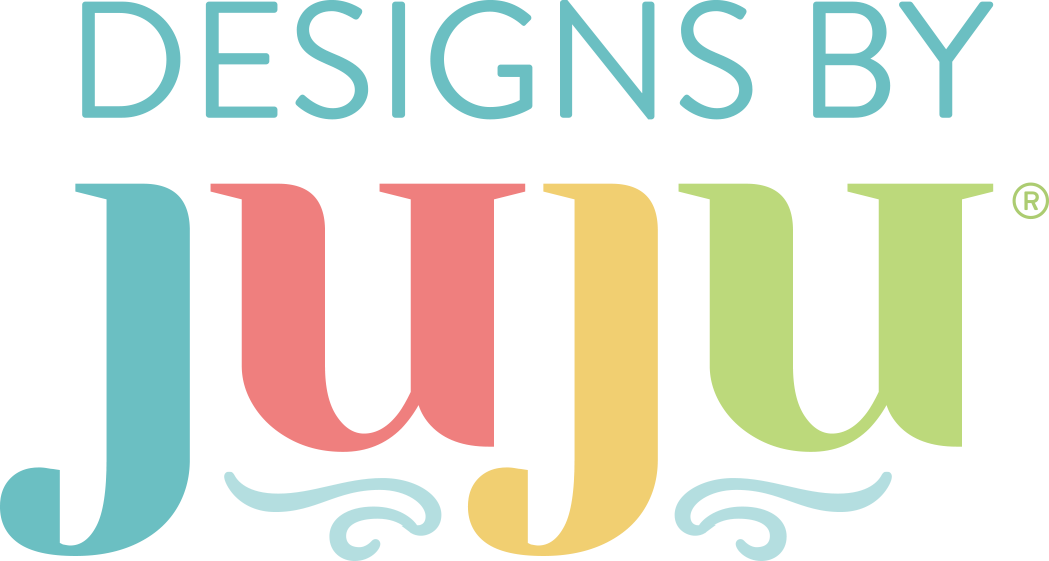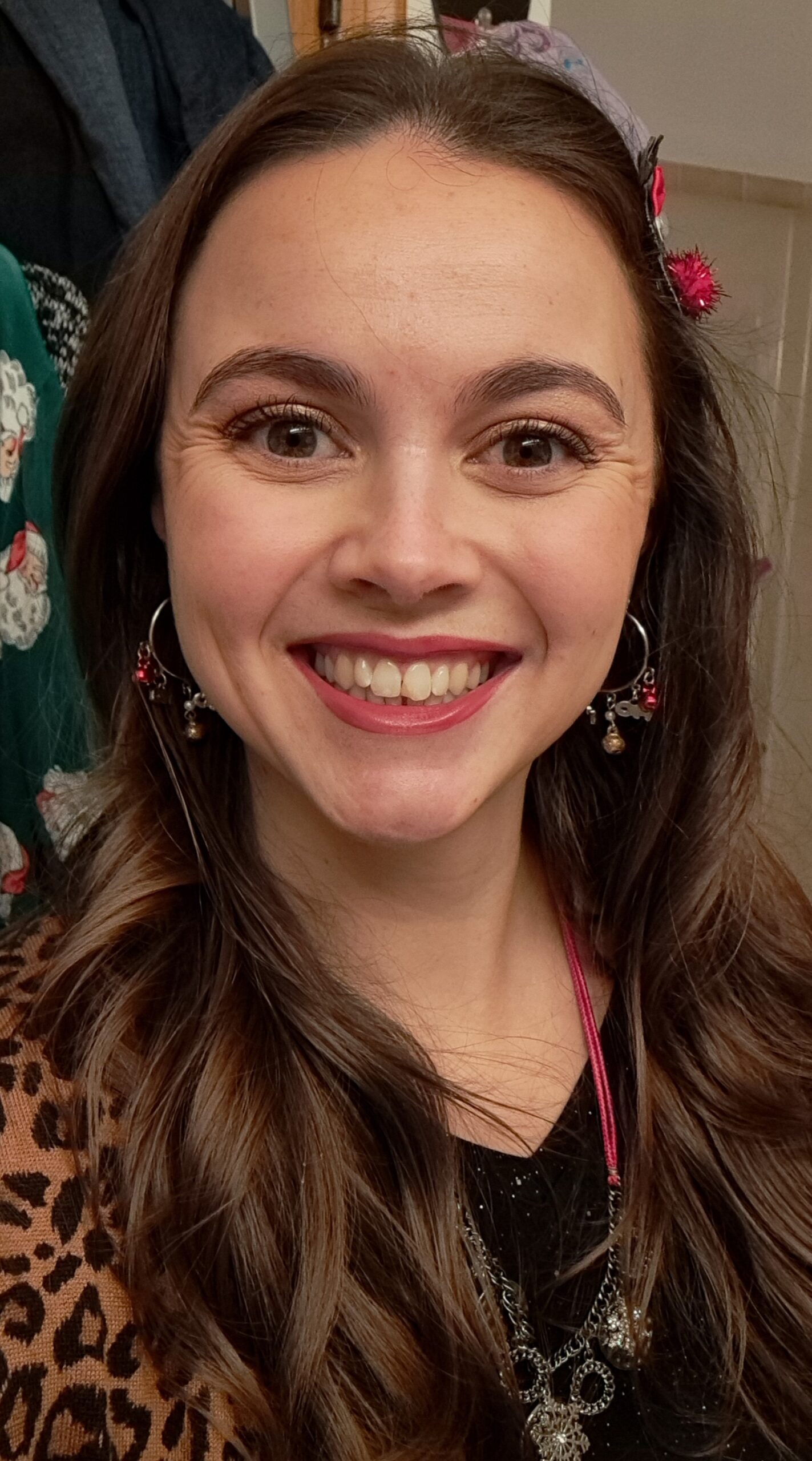Choosing the Right Thread for Your Next Embroidery Project

Starting an embroidery project, whether you’re a seasoned pro or a complete beginner, can be a little daunting! Choosing the right thread can make all the difference in your embroidery projects. In today’s blog post, we’ll examine numerous types of embroidery thread. You’ll learn about the different qualities of each embroidery thread, how to analyze your options, and how to select the best thread for your project.
Embroidery Thread Galore!
There are many great embroidery threads available to crafting enthusiasts today. Something important to note before we dive into our thread options . . . traditional sewing machine thread is NOT the same as embroidery thread. It is possible to use sewing machine thread in your embroidery machine, but I prefer to use threads that are specifically made for machine embroidery.
Sewing machine thread tends to be thicker than machine embroidery thread and may require some additional adjustments with your needle size and tension.
Embroidery thread, on the other hand, typically has a gorgeous, glossy sheen that will not only help your finished embroidery designs stand out, but also assists the machine in smoothly running the thread during the embroidery process. If you are a beginner, I recommend sticking with a true embroidery thread.
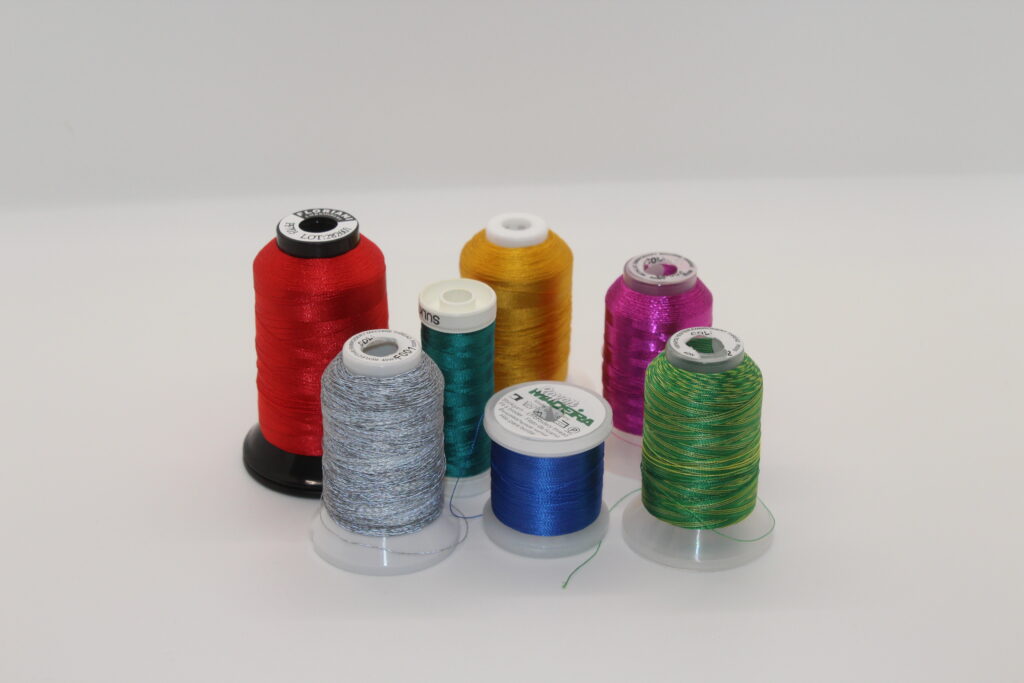
One of the most common types of embroidery thread is polyester thread. Polyester thread accounts for the majority of the thread in my embroidery arsenal. It’s durable, has a beautiful sheen, and comes in a wide range of colors. It’s a great option for clothing embroidery and other embroidered items that are machine washable. The thread can be ironed without shrinkage and it holds its color and shape wonderfully.
Another common type of embroidery thread is rayon thread, known for its vibrant colors and sheens. It is a great option for more delicate pieces, as rayon’s major downfall is its strength and durability. I typically only reach for rayon when doing intricate stitching projects or for embroidering items that will not be washed or handled frequently. Embroidery machines don’t always properly adjust to the softness that rayon thread has, which may cause issues during stitching, especially at high speeds. My machine doesn’t seem to have issues with rayon thread, but I still recommend using extra caution while using this material.
Investing in high quality polyester and rayon thread is essential for ensuring your stitching projects turn out neat and last for many years to come. Polyester and rayon threads are considered the best for machine embroidery projects and spending a little extra on high quality materials is totally worth it.
Once you have a nice selection of these essential embroidery threads in your collection, you may want to branch out and explore specialty embroidery threads. Cotton thread, variegated thread, and even glow-in-the-dark thread can be fun options for more experienced embroiderers. There are dozens of options out there, so experiment and see what works for you.
Cotton embroidery thread has more of a matte look than polyester and rayon threads. It seemed to stitch fine in my machine, but the delicate texture of the thread made me wary of running it at high speeds. Cotton thread may break easily depending on the tension of your project and has the chance of tangling if stitched too densely. I purchased cotton thread for a potholder project, because I wanted to use a material that was microwave-safe and could withstand high heat. This thread is typically a bit less decorative than polyester and rayon, but is a great choice for functional pieces.
Variegated embroidery thread is one I love using in all types of projects. Variegated thread adds pizazz, and a unique texture to projects that can otherwise look flat. It looks especially cool on Free Standing Lace projects, such as bookmarks and ornaments. Because variegated thread is typically made from a polyester or rayon base, it also has a beautiful sheen that will make your embroidery designs pop!
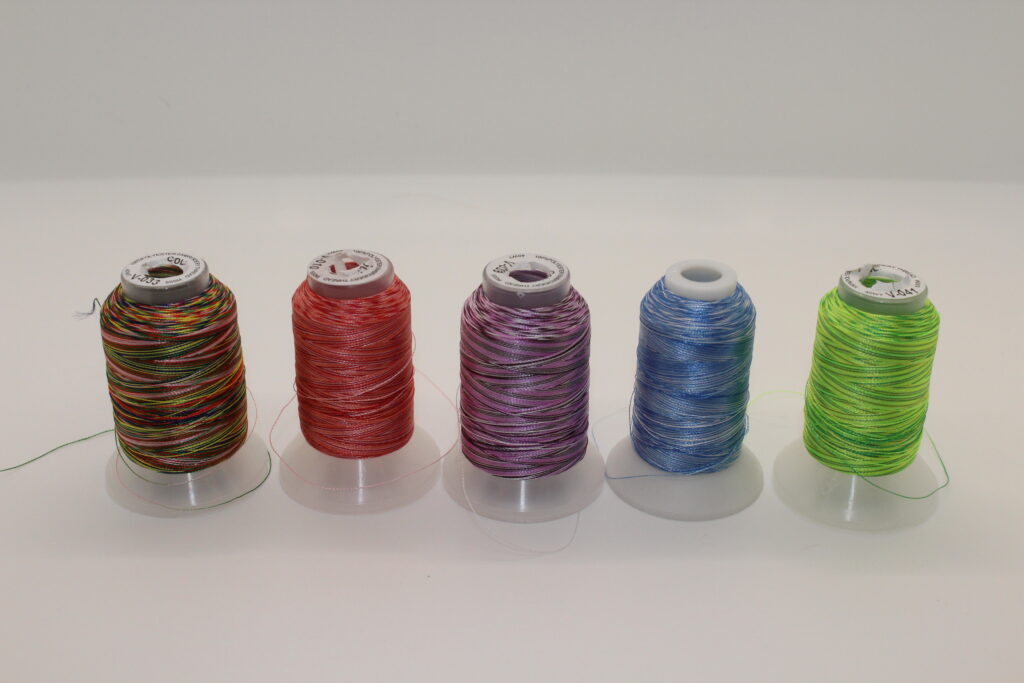
Glow-in-the-dark and reflective embroidery threads are very fun to incorporate in Halloween projects or when making pieces that will be used in the dark. While both of these threads typically have a durable polyester base, the unique dyes and additives can make them slightly more prone to breakage when stitching. You can always use a larger needle and slow your machine down if you’re having issues with this material. Test and learn is your best bet!
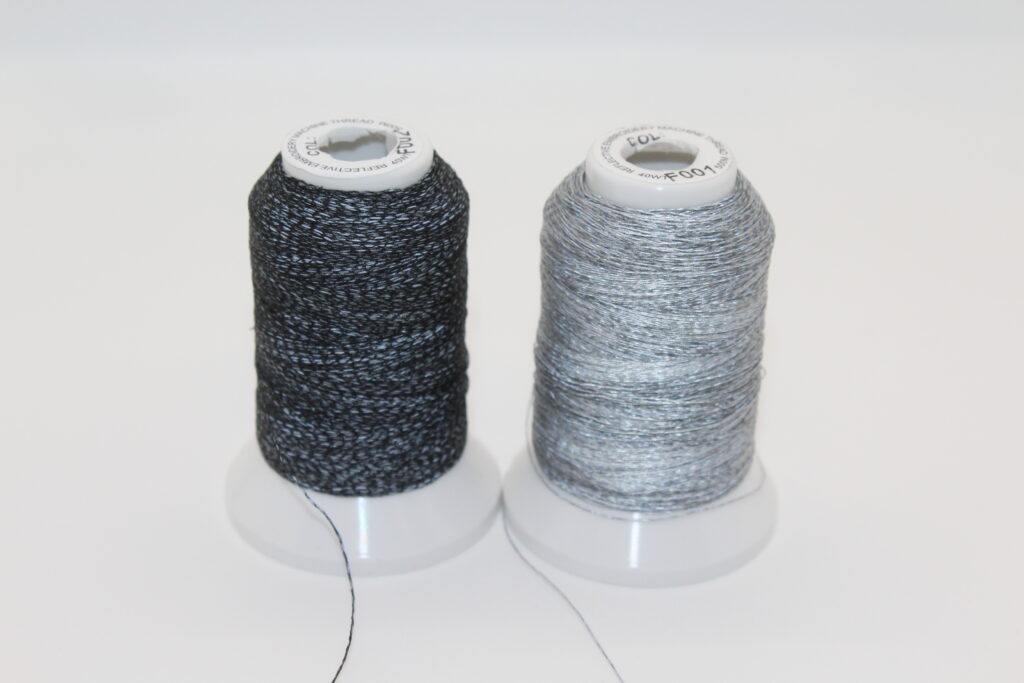
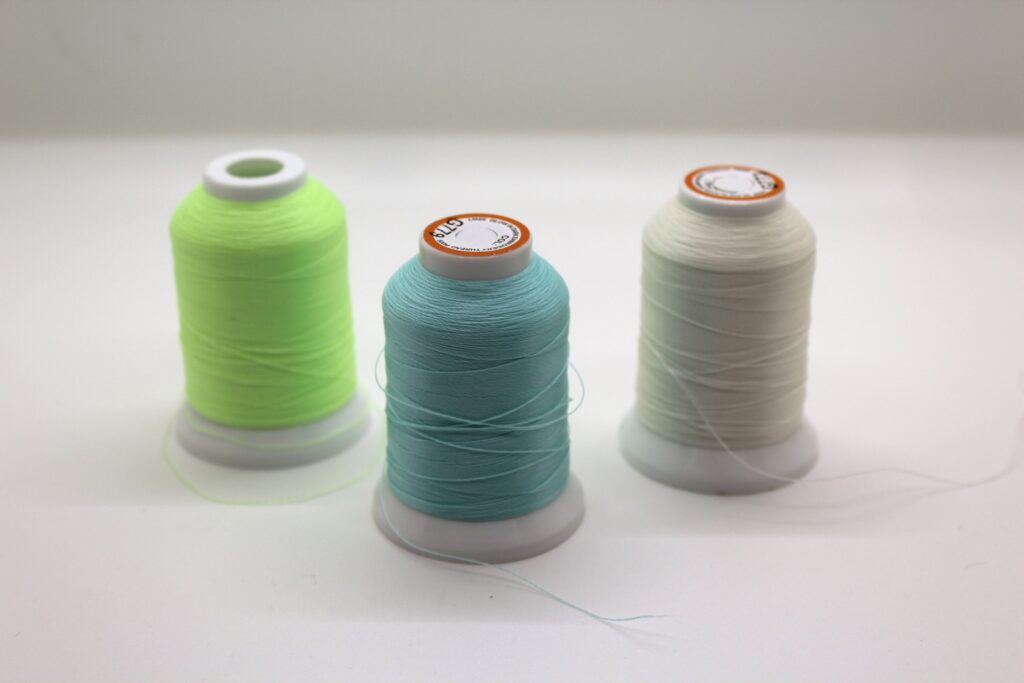

Metallic embroidery thread is one of my favorite specialty threads to use! You’ll definitely want to slow your machine down when using this material, since it is more delicate than typical embroidery thread. I have experimented with varying needle sizes for my metallic thread projects over the years and have found they all tend to stitch about the same. Thread breakage is common, but the color and design payoff often makes it worth the risk.
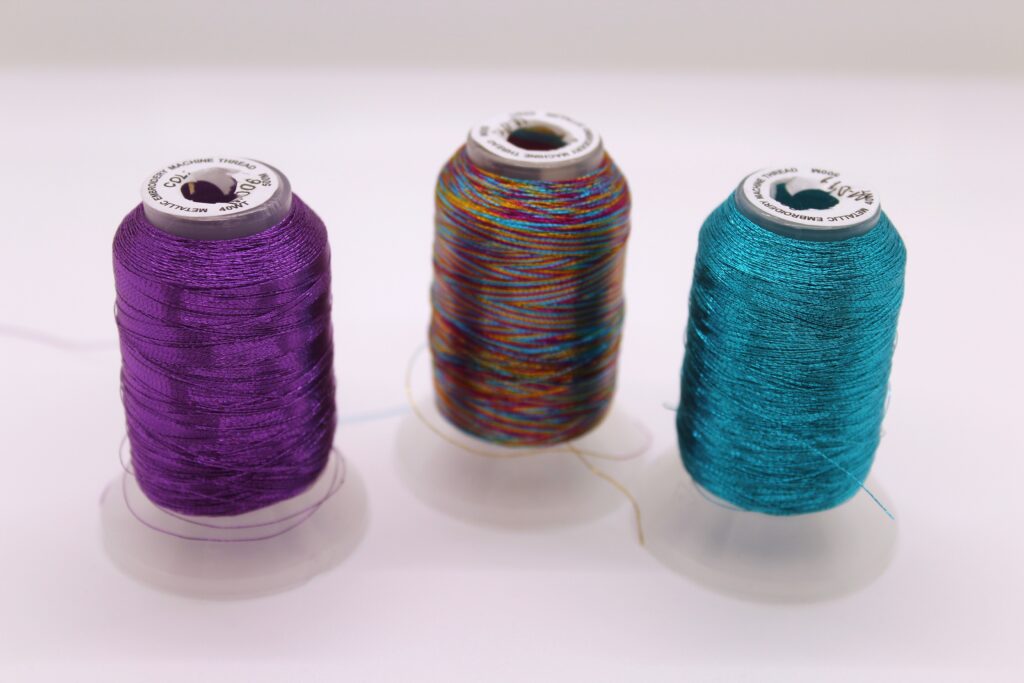
Understanding Thread Weight
A key element of choosing the right embroidery thread is considering your embroidery thread’s weight. With embroidery thread weight, the larger the number, the thinner the thread, and conversely, the smaller the number, the thicker the thread.
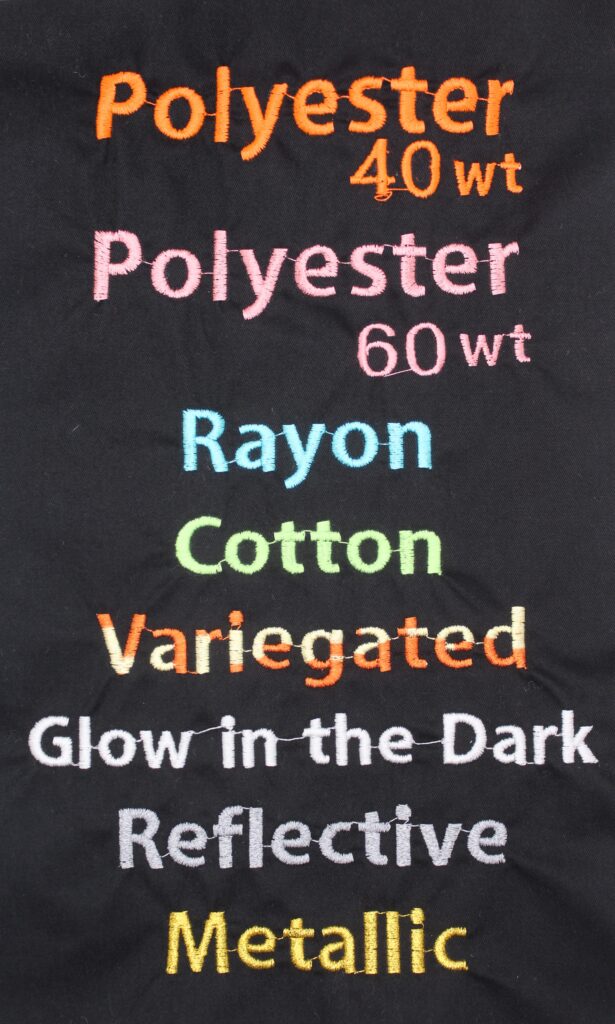
Thread weight is an important factor to consider when examining the aesthetic of your embroidery design. Traditional embroidery designs are digitized with 40 weight thread in mind as it is the industry norm for these projects. If you’d like to create smaller, intricate details on a project, such as dainty lettering, you’d likely want to select a higher weight thread, such as 60 weight polyester.
It is important to keep in mind that choosing a thread weight not appropriate for your project may cause issues with your design stitch out. For example, if you use a thread that is too thin, you run the risk of having inadequate stitch coverage. If you use a thread that is too thick, you may have overlapping stitches.
Needle size also becomes a factor with thread weight . . . the thicker the thread, the larger the needle hole needs to be. This is why I recommend using 40 weight polyester and rayon for most projects, especially if you’re new to embroidery. If you’re using specialty threads, such as a metallic thread, I’d recommend creating a practice project before you use them in your final piece, because they are typically a different weight than traditional 40 weight polyester and rayon and may not stitch the way you anticipate.
Bobbin Basics
Embroidery thread is only one segment of the stitching process. High quality bobbin thread is another part of your thread “sandwich.” Your polyester, rayon, or specialty embroidery thread is what will be seen on the top of your design, and your bobbin thread is what you’ll see on the underside. Bobbin thread is typically 60 or 90 weight and is made of 100% polyester to prevent shrinkage, breakage, and fraying.
Choosing a strong, durable bobbin thread is equally as important as choosing the decorative thread you use on the top of your project. I prefer purchasing pre-wound bobbins for the majority of my embroidery projects, for their overall ease of use and consistent structure.
Pre-wound bobbin thread is usually black or white, but can be purchased in various colors. If you’d like to exactly match your top thread color, most embroidery machines have a built-in bobbin winder that you can use to wind your own bobbin. If you’re purchasing pre-wound bobbins, make sure you know what size and type of bobbin your machine requires.
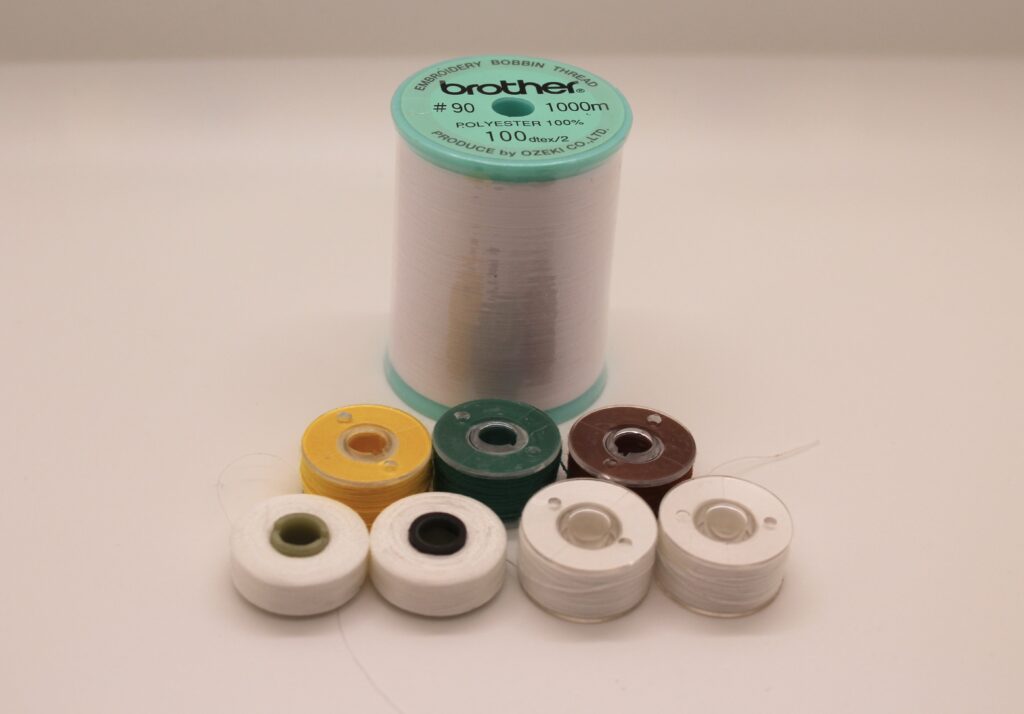
Now that we have covered embroidery thread types, thread weights, and bobbin basics, you're ready to tackle your next embroidery project! Designs by JuJu has so many amazing designs and projects to choose from, you’re sure to find exactly what you’re looking for to take your project to the next level and create a long-lasting design that you’ll cherish for years to come.
